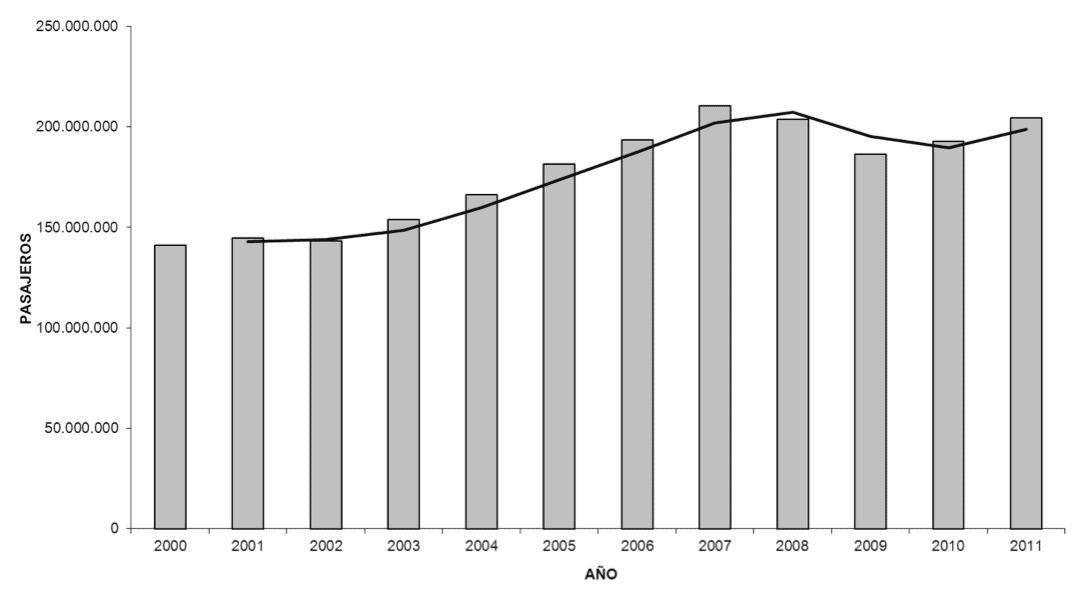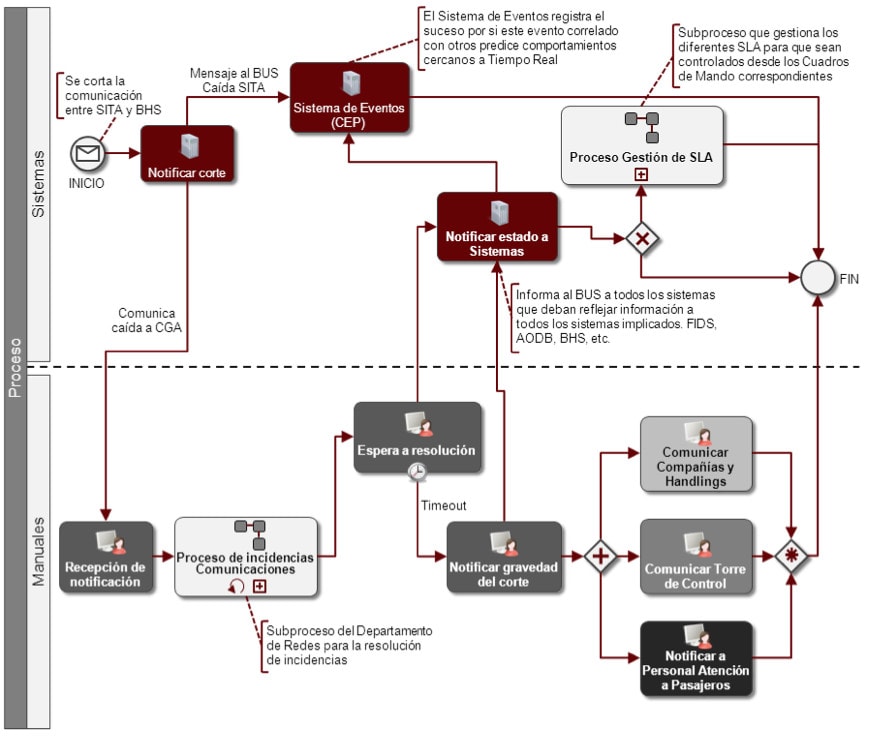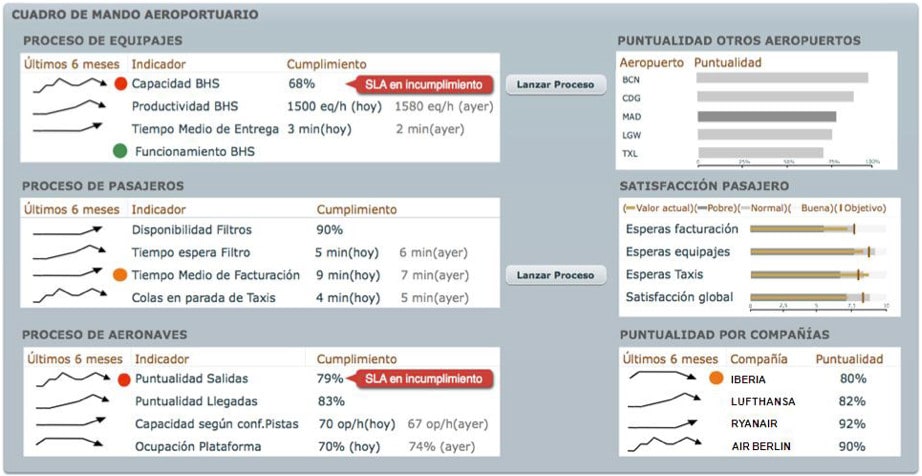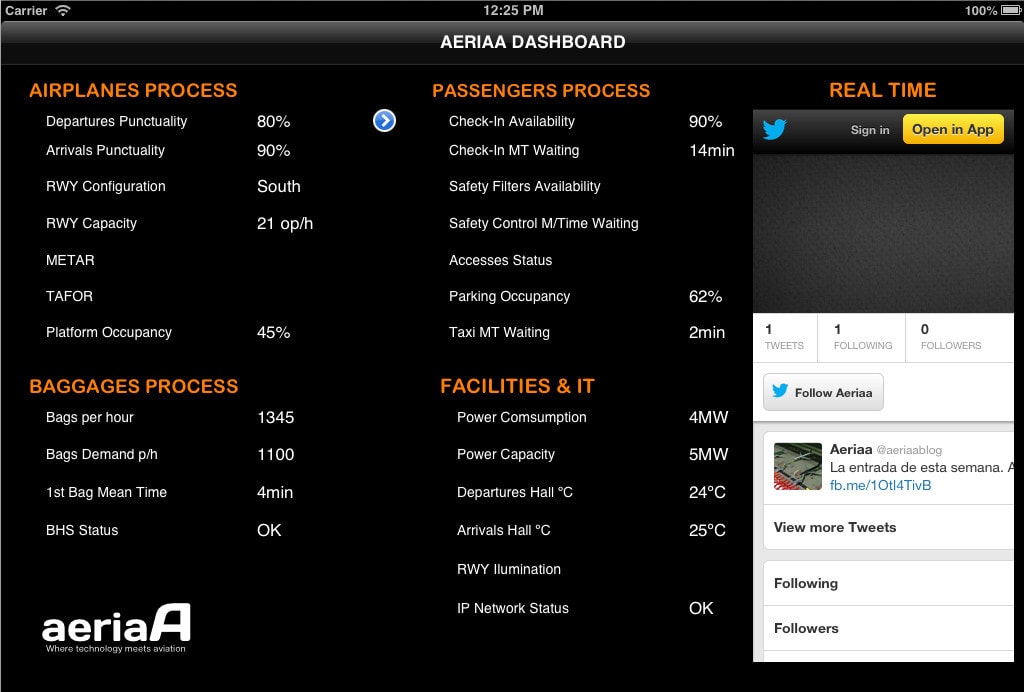The past 6th of june, at the Aeronautics and Space College (EIAE) of the Universidad Politécnica de Madrid. UPM (Spain), my book titled, “State of-the-Art of IT technologies applied to Airports”, published by Isdefe, were presented (spanish language link) by:
- Miguel Ángel Gómez Tierno. Director of the EIAE. UPM.
- Miguel Ángel Oleaga Zufiria, the former Madrid-Barajas Airport (from 2001 to march 2013).
- José Manuel Hesse Martín. Isdefe’s COO.
- Francisco Quereda Rubio. Isdefe’s CEO.
- Ángel Cepedano Beteta. Isdefe’s Transport and ICT Directorate Manager.
First of all, the book is published only in spanish. This is the portrait, representing the new Alicante airport’s terminal (ALC):

State-of-the-Art of the ICT Technologies applied to Airports. Author: Pedro Garcia Fernandez. Editor: Isdefe www.isdefe.es
The book collects the experience, mine and of my Isdefe’s colleagues, in the application of integration technologies at airports. The main topcis are: SOA / ESB, information model, Integration project approach, airport procedures, competence centers, dashboards and the introduction of new technologies in the field of BPM and CEP. It is also intended for the Airport’s Managerial Staff for reducing the gap with the IT staff about the possibilities of the technology for delivering new services, reducing costs and for generating more revenues.
You can download a free PDF copy, but please continue reading.
The book is organized in three main areas:
- Chapters 1 to 3: introduce the current airport context (mainly the spanish), the frameworks with which we have addressed the several airport’s systems integration projects and processes and finally, a compendium of general processes and systems within the airports.
- Chapters 4 to 7: introduce different technological paradigms: integration services and associated data model, automated business processes and complex event processing.
- Chapters 8 to 9: the exploitation by the airport management centers (AMC or APOC) from the information systems based on metrics, service level agreements, etc., and the necessary Competences Centers with the appropriate roles to address the implantation of the technologies described within the book.
Origins:
Before the book, there was a 20 hours course for helping to the aeronautics member of the project’s team to understand the technologies behind the systems, and for the technologist to understand the common airport’s processes and why we use the technology. So in the early 2010 we started to convert the course into the book, after thousands of revisions the book were finally edited and printed at the end of 2012.
Contents:
Chapter 1. Introduction to the spanish airport reality and next challenges.
It introduces the spanish airports’ main figures and facts, the global IT trends based on SITA / ACI publications, and the new challenges as the Single European Sky…
Chapter 2. Project managing frameworks for airport systems integration and process reengineering.
This chapter relates how we faced the vast integration and the process reengineering project’s.
Chapter 3. Airport processes and systems.
Description of the main airport processes (aircraft, passenger, security, baggage) and systems (AODB, RMS, BHS, FIDS, HVCA, CCTV, ACS…)
Chapter 4. The management and standardization of the data model in the airport business.
It introduces the importance and the strategy of unique and standard information model in the implementation of processes and airport services. It introduces XML, Semantic Languages, JSON as information descriptors and containers.
Chapter 5. The importance of systems integration.
It explains why we need integration at airports, and describe the paradigms of Pub/Sub, Request/Response, SOA, ESB, SCA, Queues, REST…
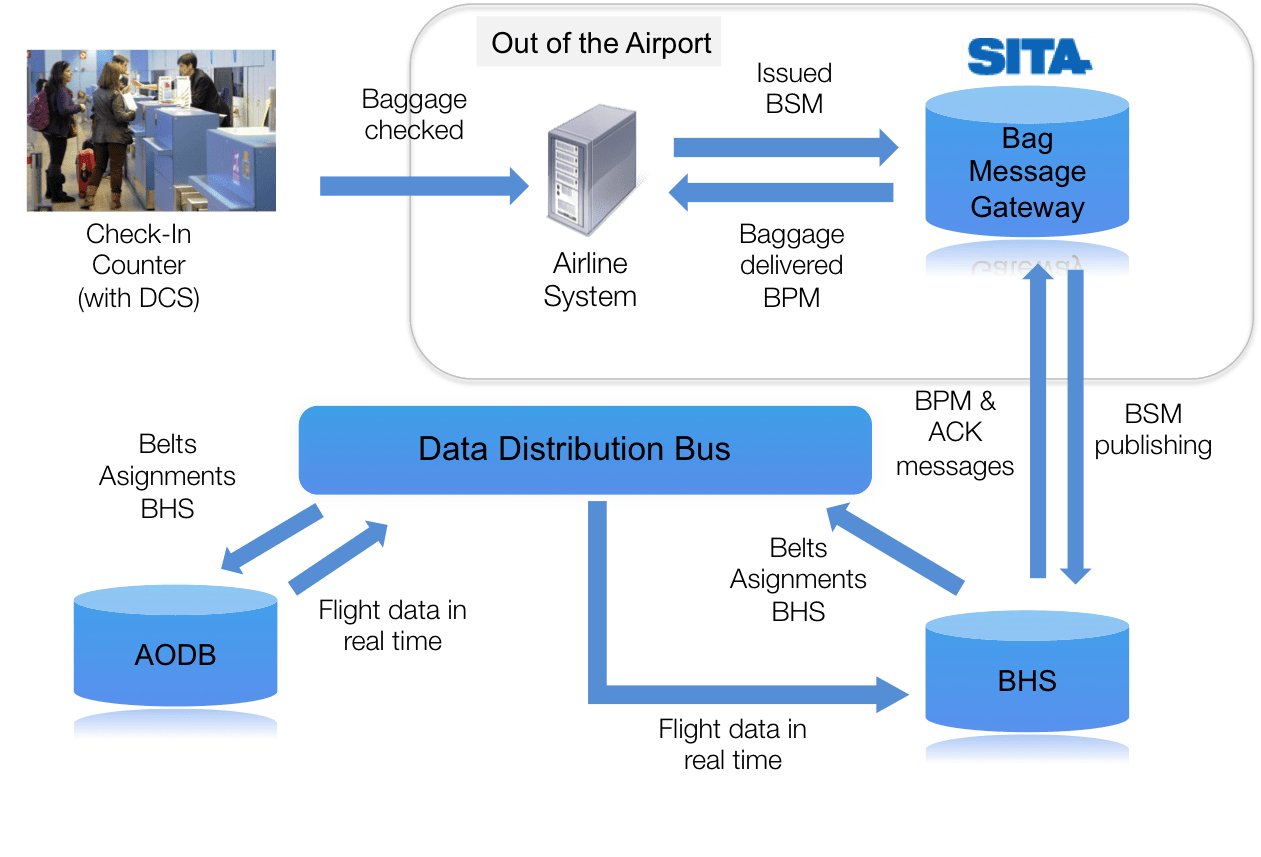
Integration Architecture in a Baggage Scenario. (Translated into english from the original of the book).
Chapter 6. Airport business processes improve management. BPM
This chapter explains the BPM origins ant its basics, objectives, BPMN notation, XPDL, BPEL, etc.
Chapter 7. Real time airport processes prediction and adaptation. CEP.
This deal with the Complex Events Processing concepts and examples for its implementation at airports.
Chapter 8. Dashboards. KPIs and service level agreements. Management of uncertainty in airport management centers.
It talks about the APOC, or AMC, and the use of dashboards with KPIs.
Chapter 9. Competency centers for integration, airport services and processes.
And in the final chapter, it is described the competency centers needed for the whole project implementation, roles and functions.
Acknowledgement:
I want to thank to all my Isdefe’s colleagues that accompany me during the last 9 years, in the main projects of Madrid-Barajas MAD (new Terminal 4 and APOC), Málaga AGP (new Terminal 3) and Alicante ALC (New Terminal), to my project’s directors and Aena responsibles for giving me the opportunity to work with them and building great technology and great human groups.
Of course, to my family and friends.
Download it from my Dropbox: (please if you want to share the book, refer this post) or you can also download from Isdefe’s website
Epilogue:
If you are an Aeriaa follower, you probably notice that some of the pictures of this post are related to the Aeriaa Dashboard Project. One of the goals of this project is to put in reality some of the concepts explained within the book.
For more info:
Isdefe. www.isdefe.es
Aeronautics and Space College. UPM. www.eiae.upm.es

This work by Pedro Garcia is licensed under a Creative Commons Attribution-NonCommercial-ShareAlike 3.0 Unported License

